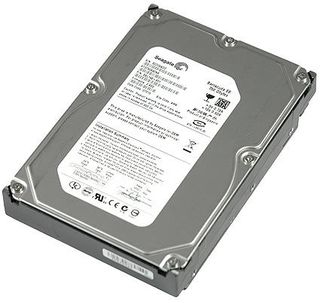The Power Saving Guide
Hard Drive

Hard drives typically consume approximately 10 W or slightly more power when active. So, the math is easy: each hard drive you add will consume an additional 10 W. If you run three hard drives for storage, you should consider replacing them by one large drive sometime in the future, because it will reduce the power consumption by 10 W per drive. Since the cost per gigabyte has been falling drastically, you should be able to sell three 80-200 GB hard drives for $30-40, and invest $80 in a 400 GB hard drive. Drives with 500 GB of capacity will fall below pricepoints of $ 100 fairly soon.
Check list:
- Turn on power saving mode for hard drives, especially for systems running 24/7
Savings: 8-9 W per hard drive that stops the spindle motor. 10 W per hard drive that you stop using in favor of less, large capacity drives.
RAM

The main memory has quite some impact on power consumption. Memory speed and voltage clearly matter, but we will stick to memory configurations in this article and talk about clock speed and voltage influence in the second part.
Using two DIMMs, our test system had a power draw of 150 W in idle (with Enhanced SpeedStep enabled). Changing the memory from two to four DIMMs, we saw an increase of 8 W to 158 W. We recommend against running only a single memory module, because you will lose the dual channel mode, which cuts the memory bandwidth in half.
Check list:
- Do not increase the memory voltage unless you really want to overclock the memory
- Use two DIMMs instead of four if possible (2x 1 GB instead of 4x 512 MB)
Savings: 8 W difference between two and four DIMMs with our DDR2-800 test system.
Stay on the Cutting Edge
Join the experts who read Tom's Hardware for the inside track on enthusiast PC tech news — and have for over 25 years. We'll send breaking news and in-depth reviews of CPUs, GPUs, AI, maker hardware and more straight to your inbox.
Most Popular

